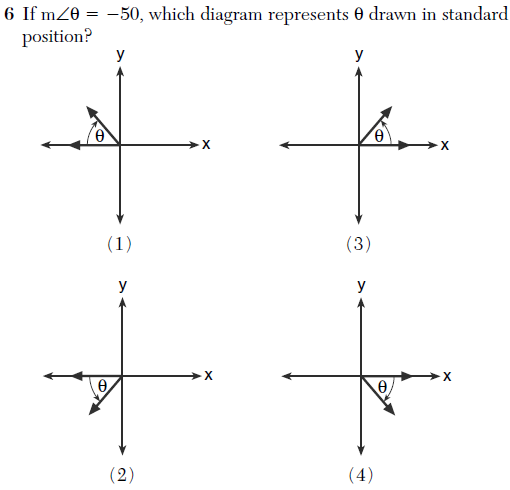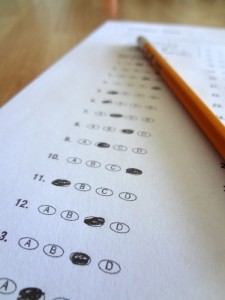Here is another installment from my review of the June 2012 New York State Math Regents exams.
Below are a few examples of what I consider “bad” questions. “Bad” here might mean poorly worded, poorly conceived, or irrelevant. In addition, there is an example of a question with a problematic rubric.
First, a type of problem that occurs regularly, one that is a pet peeve of mine. From the Algebra 2 / Trig exam:

The concept of “middle term” is artificial and depends entirely on how one chooses to evaluate the given expression. This question does not test an authentic mathematical skill; it tests how well a student executes one particular method of evaluating this particular expression.
Next, an example of a poorly-phrased question, one that confuses mathematical terminology. From the Integrated Algebra exam:

To “solve” a system of equations, one must find the ordered pairs that satisfy the given equations. Apparently this question wants only the y-values of those solutions, but the phrasing confuses what it means to “solve a system” and to “solve an equation”.
Students can probably figure out what the question-writer wants to hear in this case, but the lack of precision will only exacerbate confusion about the word “solve”.
Here’s a problem on the Algebra 2 / Trig exam that is simply irrelevant.

This question tests one thing, and one thing only: knowledge of an arcane and largely irrelevant notation, namely, degree-minute-second representation of angles. Would anyone outside the nautical or astronomical worlds consider this even remotely valuable?
Lastly, this question from the Integrated Algebra exam is formulated in a reasonable way, but the official scoring guide poses some unnecessary problems.

This question asks the student to graph an equation and then, using the graph, determine and state the roots of the equation. The correct answer is “2 and -4”, and with appropriate work, is worth three points.
However, if the student gives the answer “(2,0) and (-4,0)”, the student can only earn two out of the three points. So if the student gives the coordinates of the points where the graph crosses the x-axis, rather than names the “roots” of the equation, there is a one-third deduction.
While I believe that the distinction between roots and points is important, losing one-third credit seems seems unnecessarily punitive here. If we want to test student’s knowledge of vocabulary, there are better ways to do it than by sneaking it in at the end of an involved algebra problem.
Moreover, since the question requires that the student use the graph, the student is already being forced to interpret the problem in a geometric context. Penalizing them for thinking of the roots geometrically, then, doesn’t quite seem fair.








